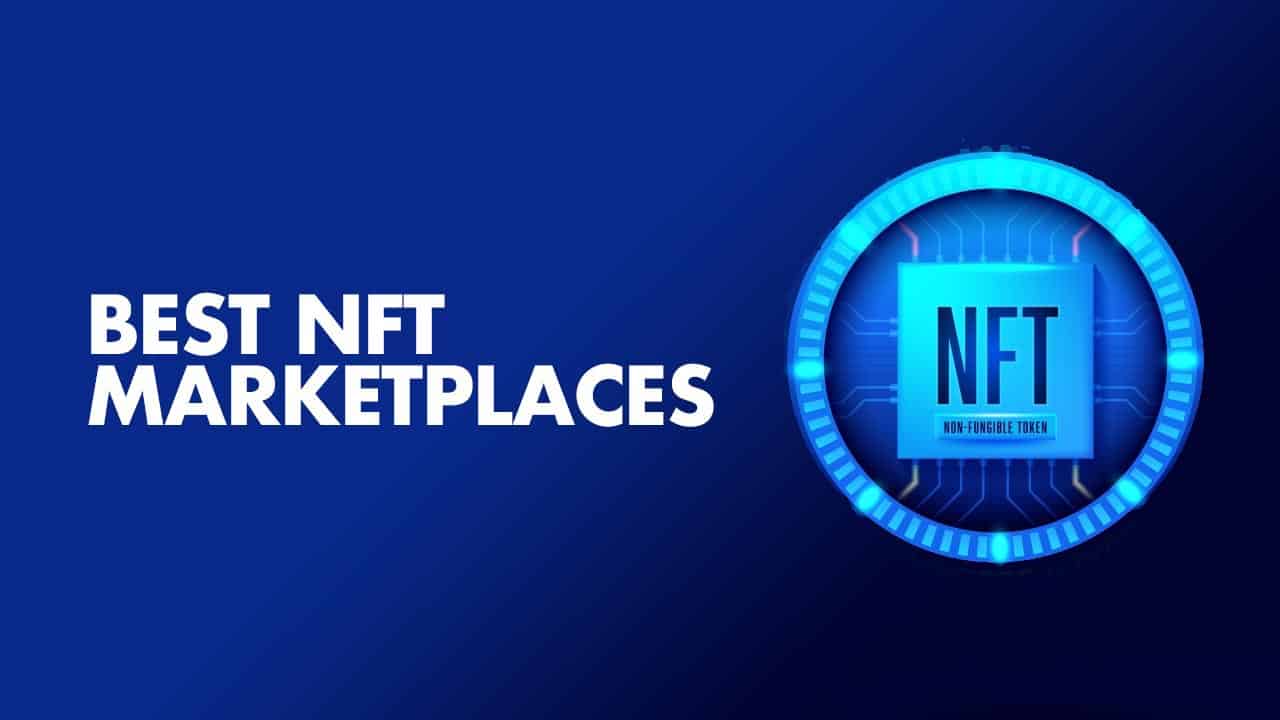
Non-fungible tokens, or NFTs, are unique digital assets that are equivalent to digital certificates of authenticity, are verified using blockchain technology, and can be sold in the digital world.
There are NFT marketplaces where you can buy and sell non-fungible tokens (NFTs), and they can be of different types, shapes, and sizes. NFTs are unique digital items on the blockchain and can be, for example, a collectible card, a work of art, and also a piece of virtual real estate or a sword inside a video game.
NFT marketplaces are online platforms where you can buy any digital item, of different types, shapes and sizes, for example crypto art, digital collectible cards and music, although there are also specialized single niche marketplaces, such as a digital art marketplace that is exclusively for selling crypto art.
How do I market my NFT art?

3d concept
To sell your artworks on an NFT platform, you need to locate them in your collection, click on them, and find the “sell” option.
Clicking on it takes you to a pricing page where you can set the terms of the sale, including whether to hold an auction or sell for a fixed price.
Ethereum (Ether) and other ERC-20 tokens are the most common cryptocurrencies for which you can sell your NFTs. However, some platforms support only the native token of the blockchain on which they were created. VIV3 , for example, is a marketplace created on the Flow blockchain and only accepts FLOW tokens.
Auctions make sense for NFTs, since scarcity is what creates value in this online marketplace. However, since not every digital artist has a fan base capable of banking an auction, there is also the possibility of limited sales, in which there are a limited number of copies of an NFT available, each at a single or fixed price.
Once minted on the blockchain, NFTs cannot be changed. This gives a strong sense of ownership and permanence.
Royalties allow NFT creators to earn a commission each time the asset is sold on the secondary market. This has the potential to automatically create lifetime passive income streams for artists and other content creators through smart contracts.
Several platforms allow for the creation of NFTs, with OpenSea and Rarible being the most widely used. The former is free and the latter charges a commission for placing the NFT on the market. Obviously, both apply fees in ETH for transactions.
There are four steps we can follow to create an NFT:
- The first step is to connect your digital wallet directly to the platform . Being digital tokens, NFTs are obviously stored in cryptographic wallets. Therefore, you will need a cryptocurrency wallet that supports Ethereum and can easily connect to NFT markets. Metamask is the best known, but you can use any other.
- Next, it's time to create your digital art, keeping in mind that any digital object can be minted as an NFT, as long as the file to be used is not copyrighted.
- The next step is to mint your Non-fungible token (NFT) , which must be accompanied by an image, a name, a description and some other fields that will identify the collection. You can mint your token under ERC standard 721 or 1155.
- Finally, take the NFT token you have created to the NFT marketplace, a process that can take a few minutes. After your NFT token is released, it will be shown to the Internet public with its selling price in Ethereum (ETH), details of its creator, who owns it, and sales history.
It should be remembered that NFTs are tokens on a Blockchain, so creating one entails, in most cases, an expense. This is because any transfer on the Blockchain implies a cost for that network. Most of the NFT market is currently built on the Ethereum Blockchain, where the network fee for tokenizing your art is called “gas”.
List of 17 Best NFT Marketplaces
Listing your digital artwork on a marketplace sometimes requires a fee to complete the process. While this is not the case on all platforms, this should be taken into consideration when creating the NFT.
There are different marketplaces that cater to different types of NFT collections. From general and specific non-fungible tokens such as games or art, there are marketplaces to cater to all audiences in all sorts of different niches. These are the top NFT marketplaces:
1. OpenSea
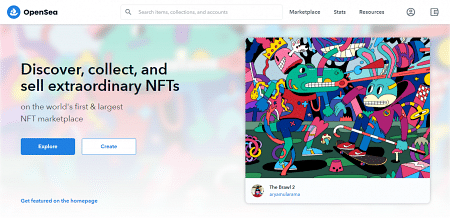
OpenSea is the largest marketplace for digital assets at the moment, including rare
digital artwork, digital collectibles, online game items, digital art, and other digital assets. OpenSea is a decentralized marketplace based on the Ethereum network, and offers trading via a smart contract, which means that no central authority ever has custody of your items.
With thousands upon thousands of products registered on the platform, OpenSea allows anyone to buy and sell crypto collectibles, gaming items, digital art, and other blockchain-based digital items, offering different projects.
2. Nifty Gateway
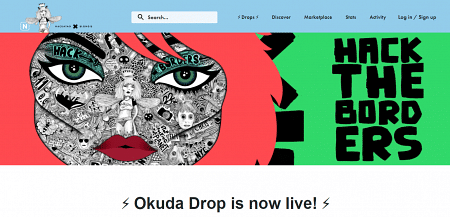
This marketplace is one of the most popular places where celebrated artists like Beeple, Grimes, and other NFT artists have decided to release their own artwork. You can take a look at each artist profile registered on the platform, and use the search engine or view different exhibitions online.
Within each of the works you will see how much it costs or the editions that exist, for example. You can see all available editions, the highest bid, the last sale. Just tap the “Discover” option to find many of the popular works or “Drop” to discover all kinds of digital artists. The site describes NFTs as “Nifties”, tradable, collectible digital assets that you can trade or sell on this platform.
3. Foundation
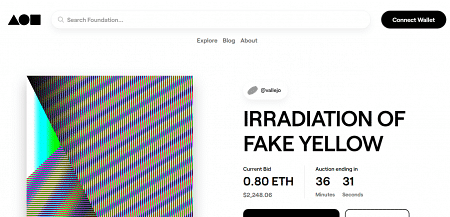
One of the best and most popular marketplaces for NFTs is Foundation. This platform focuses on the new creative economy based on NFT artwork, and at the time this article was written, you can only sell your digital artwork after you have been invited to do so by a user or by members of the community.
By default, all works are sold in auctions, and the platform also allows secondary sales. Foundation is therefore an ideal place to collect artwork directly from digital artists themselves. However, as an artist, you will need to connect with your audience or have a pretty solid fan base before you can sell anything on the Foundation platform.
4. SuperRare
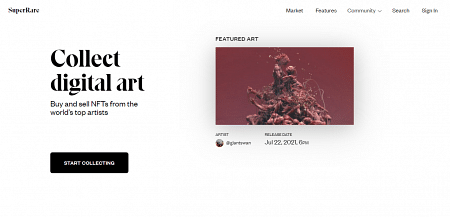
SuperRare was one of the best crypto art platforms in 2020. The platform only allows more popular artists to sell their work and curates the art they sell. As a result, being approved by SuperRare is considered a great achievement by many digital artists.
All purchases on SuperRare require Ethereum (Ether), the native digital currency of the Ethereum blockchain. Artwork on the SuperRare site generally tends to be a bit more unique. All items sold are unique, meaning that there is only one edition.
5. Valuables
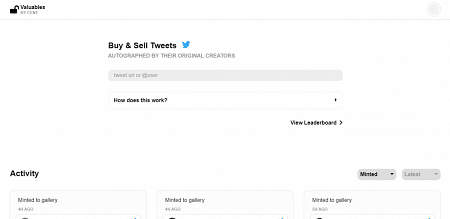
This platform became very popular after Twitter CEO Jack Dorsey auctioned off his first tweet for $2.9 million. So for those who want to take their first steps into the NFT world, the Valuables platform is the right place, as it focuses exclusively on selling and buying Tweets.
Any user can simply log into the platform, copy and paste the URL of the Tweet into the search bar. From there, Valuables will notify the sender of the tweet that someone is interested in buying. However, someone else may be interested in the same Tweet and make a counter offer to beat the offer.
Once the owner of a Tweet accepts an offer, a non-fungible token (NFT) with their own signature will be transferred to the buyer. Valuables' unique focus means that virtually anyone is selling their Tweets, opening up a level of accessibility never seen before.
6. NFT Showroom
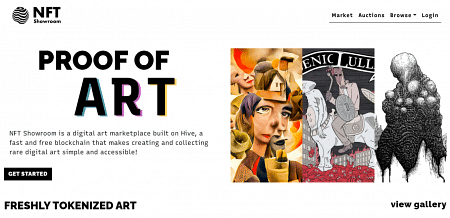
NFT Showroom is a marketplace for digital art projects, built on the Hive blockchain, which is a fast and free technology, and makes the creation and collection of rare digital artwork simple and affordable for everyone.
Open to any internet user, and welcoming all art styles and experience levels, they claim to have an easy to use interface and tools and are one of the best affordable alternatives for digital creators and collectors.
The only thing required to start creating and collecting is to make a Hive account and have Hive Keys. To tokenize and buy art, the platform uses a linked token called HIVE. The platform also offers content creators two options for creating tokens – private and limited reproduction rights.
NFT Showroom charges a 10% commission when you first sell your art, while for secondary sales, it charges a 5% commission and gives 5% to the original artist.
7. Rarible
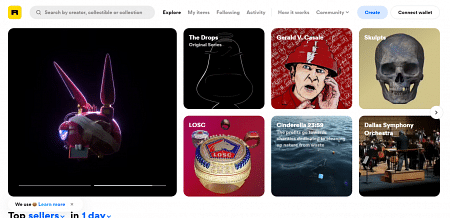
Rarible is an NFT marketplace where all users who sell or buy non-fungible tokens (NFTs) automatically earn RARI tokens. This is the first governance token in the NFT space, and they give the owner a stake in the platform and a vote in governance decisions. The platform allows its users to sell online gaming items, but has a strong focus on artwork and digital collectibles.
On this important platform it is possible to sell all kinds of NFT, from art and collectibles to game items, virtual land and web domain names. Although digital artists when submitting their creations wait for approval, Rarible allows any internet user to be listed on its online platform. It also allows creators to specify their own percentage as royalties for secondary sales.
8. BakerySwap
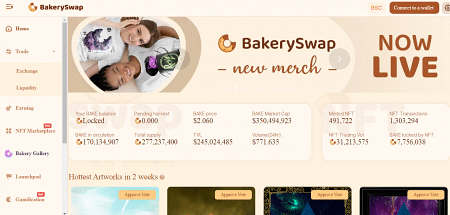
Binance Smart Chain is known for its great growth in the decentralized finance (DeFi) space, and is now slowly moving into the NFTs space. BakerySwap has even created its own marketplace for non-fungible tokens (NFTs), where all payments happen with the platform's native BAKE token.
Creators need to log into the marketplace using their browser extension with the Metamask wallet, go to the NFT Marketplace and press Mint Artwork. There will be a form to submit digital artwork to BakerySwap, which costs about 0.01 BNB (Binance coin) for mint. It is a fairly simple and inexpensive process to do.
9. Atomic Hub
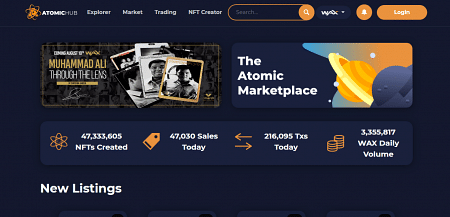
There are a variety of NFT markets for the Wax blockchain, but there is only one most popular marketplace, the Atomic Hub. This platform lists all Wax projects and allows all users to trade their goods with the WAX token. Native to the Wax blockchain means that trading does not require any transaction fees, which is one of the reasons why the market is growing rapidly.
This allows users to trade assets with a value of no more than $0.25. In addition, it is quite easy to create your own NFT collection on Atomic Hub. Without paying any gas fees, users can create their own collection simply by clicking on “NFT Creator” in the top menu of the platform.
Each collection can be populated with NFTs of a similar theme, and creators can use ‘schemas' to standardize the data behind these NFTs.
10. The Sandbox Marketplace
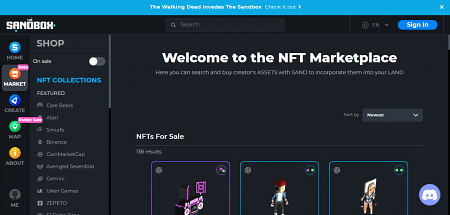
At the time of this writing, the Sandbox Marketplace is still somewhat exclusive. Only approved content creators can coin their assets and list them on the marketplace. However, this will become more flexible in the future, although there will always be an approval process.
In the Sandbox Marketplace, creators can sell their digital files that they have made using the free designer tool VoxEdit. Players can then buy these assets using the SAND token and use these items to make a game in another free tool, GameMaker. Ultimately, all NFTs sold in the Sandbox Marketplace must be used within The Sandbox's game universe.
11. Arkane Market (Venly Market)
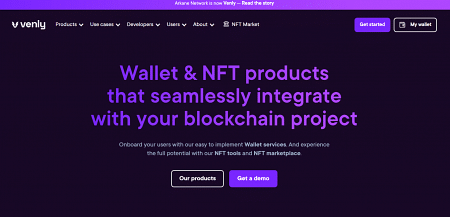
Arkane Network, now Venly, is an NFT marketplace created on the Polygon blockchain. Venly uses its own wallet service for all payments. Users will need to purchase credits, for example via USDC, in order to buy an NFT. As a result, it is very easy to understand the payment system on the market, but it is not very active yet.
12. Treasureland
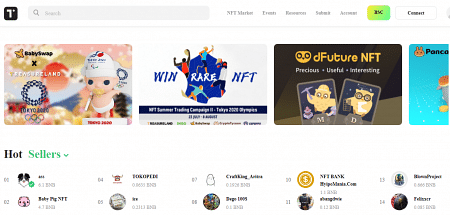
Of all the NFT markets on Binance, Treasureland is one of the most popular. The NFT market has already announced partnerships with Binance and other decentralized finance platforms (DeFi). Purchases happen with BNB tokens, but in some cases, alternatives are also possible.
For example, an alpaca for the game Alpaca City can be obtained with a BNB token or ALPA. The platform also supports a variety of other tokens such as collectible crypto. At the moment, to sell your own NFTs on this platform, artists are hand-picked by the platform owners.
13. GhostMarket
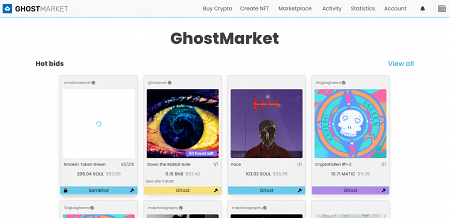
Ghostmarket is an NFT marketplace that supports the NEO and Phantasma blockchains. However, payments on this platform occur in gas for non-fungible tokens (NFTs) on the NEO blockchain or SOUL for those on the Phantasma blockchain.
For most people, the Phantasma side of this NFT marketplace will be the most interesting, as it offers game items and artwork from content creators. Uploading your digital files on this platform requires you to have a Phantasma wallet and some SOUL tokens, and the costs are usually a few cents.
14. Hic et Nunc
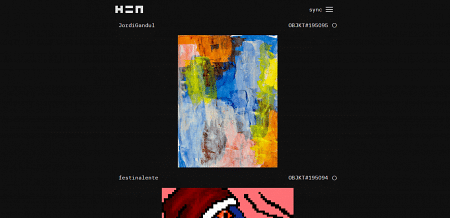
One of the biggest niche non-fungible token (NFT) markets that is gaining a lot of popularity is HicetNunc, created on the Tezos blockchain. Users often refer to the marketplace as H + N. It is a very basic marketplace where users can scroll through all available digital artworks.
A special wallet is required to register for Hic et Nunc, after which any user can submit their digital artworks, provided they have some XTZ (Tezos) tokens in their wallet. The minting process costs 0.08 XTZ or approximately $0.40. Obviously, all purchases also require the native token for the Tezos blockchain.
15. MakersPlace
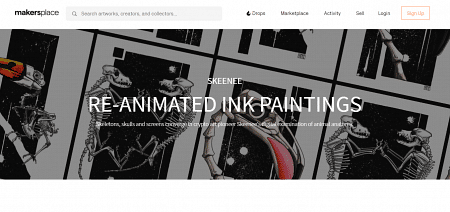
This platform is an ideal place for anyone who wants to discover and collect unique digital creations. MakersPlace offers good tools for digital creators, such as digital artists, photographers, writers and more, in order to help them connect with their fans and collectors, and monetize their content.
Open to any internet user, they seek to offer a service that simplifies blockchain technology and provides its benefits to all creators. For each sale, the platform has a 15% share of the sale value, while offering creators royalties of 10% as a commission whenever their art is resold on their platform.
One of the least popular ecosystems among all blockchains today is the Flow blockchain. Apart from NBA Top Shot, which has its own private marketplace, there are not many alternative Non-fungible token (NFT) marketplaces based on the FLOW blockchain.
The only most popular platform is VIV3, a marketplace where approved and selected creators can sell their digital items. Payments happen using the FLOW token, and a few dozen artists have held drops on the platform. Despite being able to submit your application, activity on VIV3 is still low.
Like the rest of Flow's blockchain, it is waiting for more products to be released and start offering NFTs on the network.
What is the best marketplace for NFT?
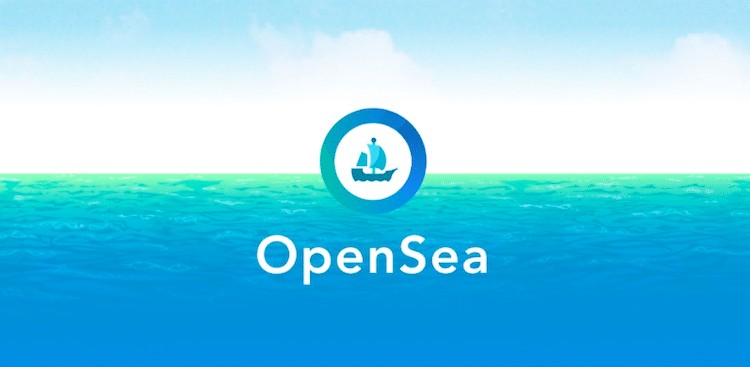
OpenSea is the largest NFT marketplace today. Here users can buy and sell NFTs for digital art, digital business cards, web domain names, land in virtual worlds, collectible cards, game items and so on. On OpnSea you can find non-fungible tokens (NFTs) from several popular projects such as Decentraland, Cryptokitties and The Sandbox.
In total, the NFT marketplace supports hundreds of projects on different blockchain platforms. OpenSea supports the blockchains: Ethereum and Polygon.
Anyone who logs on to the platform using Metamask can create their own NFT without paying any gas fees. Creators can create their own NFT collection and corresponding NFTs for free and without writing any code. Games and other blockchain projects that use their own smart contracts can also be easily added to OpenSea.
Buying and selling NFTs on OpenSea can happen in several ways. Sellers can set a fixed price, allow the price to decrease over time, or set up an auction with an end date.
Where can I buy an NFT?
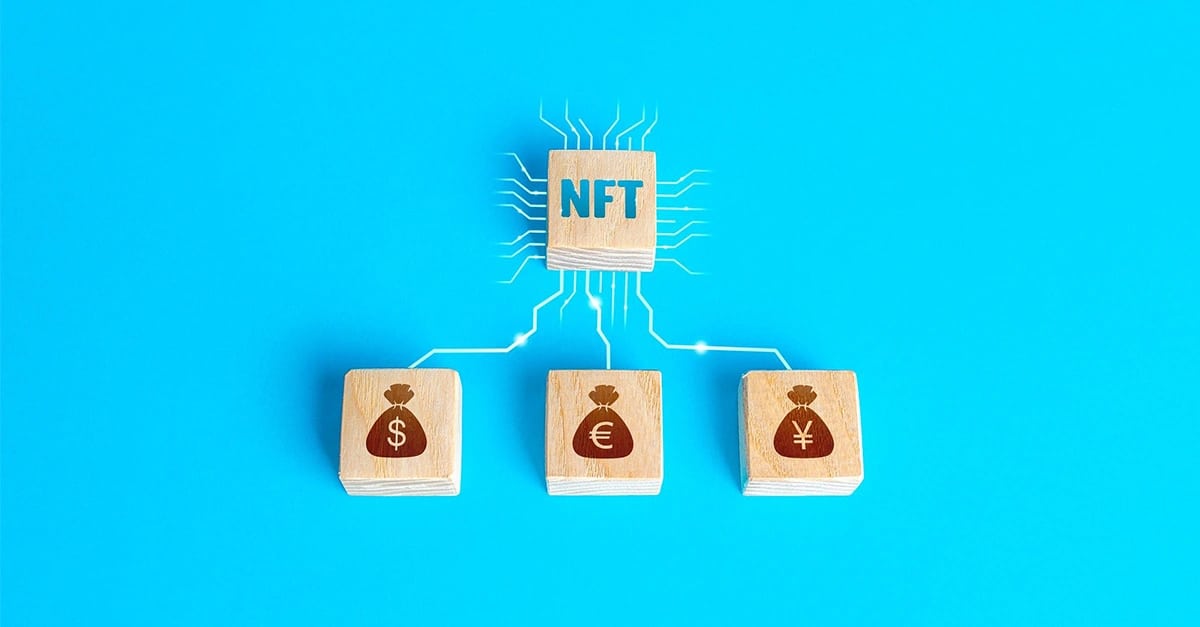
Unlike the previous one, this option allows you to invest, buying and selling various collectibles aiming to gain benefits in the short, medium or long term. In fact, some of these markets are booming right now.
Some examples are:
OpenSea: this platform was founded in 2017, and allows login through a wallet like MetaMask, which connects the web 2 with the web 3 of the blockchain. OpenSea supports NFTs based on the Ethereum blockchain. Anyone can sell and buy non-fungible tokens by making payment in ETH.
- SuperRare: unlike OpenSea, artists who sign up for Super Rare need to go through an initial interview before they can start selling artwork. However, the goal is to ensure that the artworks are original and created by real artists. Payment is made with Ethereum (ETH), since NTFs are based on the ETH blockchain.
- Mintable: the difference of Mintable to the other platforms, is in the payment method. Therefore, Mintable accepts payments in ETH and in Zilliqa (ZIL). It also retains a fee ranging from 2.5% to 10% for those who sell NFTs on the platform.
- Nifty Gateway: the novelty of this platform is also related to the payment method, which can be made by credit card. In addition to payments with cryptocurrencies, Nifty Gateway accepts fiat currencies. However, for those who will register with the purpose of selling artworks, payment will be with the USDC stablecoin.
- NBA Tops Shot: having generated over $500 million in sales according to Dapper Labs, NBA Top Shot is a series of collectible cards issued as non-fungible tokens, or NFTs, each of which represents a “moment” in USA basketball, the world's greatest basketball league.
Article sponsored by WePlay Collectible










